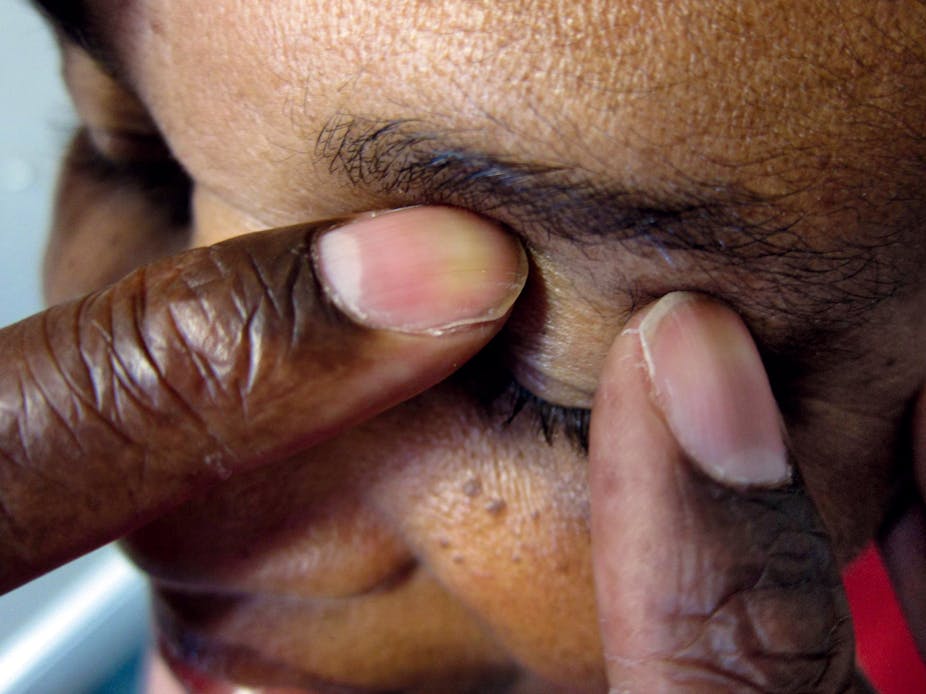Scientists have proposed a way to monitor glaucoma using a tiny device implanted in the eye. Readings from the device could be monitored by a smartphone. The technology could help prevent some people from going blind.
Glaucoma describes a group of eye diseases in which there is progressive damage to the optic nerve. This nerve connects the retina to the brain, and damage to it causes a person to lose peripheral vision.
What makes glaucoma a dangerous disease, however, is that this sort of vision loss is asymptomatic. So people often do not know they are suffering from loss of peripheral vision. This is because the brain does an incredible job of filling in the missing parts of vision and also one eye compensates for the damage in the other.
Unfortunately, as glaucoma worsens, these compensatory perceptive mechanisms unravel leading to noticeable sight loss, visual impairment and in some cases blindness. The condition is irreversible.
This age-related disease affects more than 65m people worldwide. About half a million people in the UK are undiagnosed, and about one in ten of all blindness registrations in the UK are caused by glaucoma. For those with the disease, there are about a million NHS appointments a year.
One way glaucoma damage occurs is because of raised intraocular pressure, or IOP. Fluid in the eye keeps the eyeball inflated. Usually, the fluid is continually replaced by a sophisticated plumbing system, but when this goes wrong the pressure can become abnormally elevated causing damage to the optic nerve.
Not all damage to the optic nerve is caused in this way, but it is the most common cause. For now, it is also the focus of the only treatments that we have for glaucoma. These treatments are generally successful and centre on medical therapy, such as eye drops, or different types of surgery. For proper treatment, the ophthalmologist needs to be able to measure IOP.
The best method of measuring IOP is Goldmann applanation tonometry, which is performed by measuring the force required to flatten a predefined area of the cornea – the transparent front part of the eye – with a hard surface device. Although this method has been used for more than 60 years, it produces variable measurements, even in the hands of the expert. Such measurements of IOP are not always enough for managing glaucoma.
Exciting new work by Ismail Araci at Stanford University and colleagues, just published in Nature Medicine, describes a sensor that can measure IOP more accurately. What makes this particularly exciting is that the sensor is only a few millimetres long and can be implanted in the eye. This may allow for continuous monitoring, which could make a big difference for some patients at a critical stage of glaucoma.

The tiny sensor, only a few millimetres wide, is embedded in synthetic lenses. These are used to replace the natural lenses that people with cataracts have. The way the sensor works is like a small barometer. Pressure causes fluid inside the sensor to move. The movement of the fluid can be tracked with a smartphone camera that has a special optical adapter.
There are some limitations still. Their accurate results are based on studies done in animal eyes. Also, how long the device may last is not yet clear. If continuous monitoring is needed, it must be able to last for a few years. Also, it will only be suitable for some forms of glaucoma.
Another challenge is that of implanting the device in humans. Araci and colleagues suggest that the device will piggy-back on an intraocular lens, which is commonly implanted in routine cataract surgery. This is a simple procedure that some patients with glaucoma and cataract already undergo.
It has been suggested that, because the lens of the eye plays a major role in the mechanisms leading to one form of glaucoma, then early lens extraction will improve glaucoma control in some types of glaucoma. This procedure is undergoing a trial in humans, and could boost research on implantable sensors such as Araci’s.
With its ease of fabrication, simple design and remote-monitoring capabilities, offers a promising approach for better care of patients with glaucoma. Ophthalmologists will keep a keen eye on the progress of this technology.

